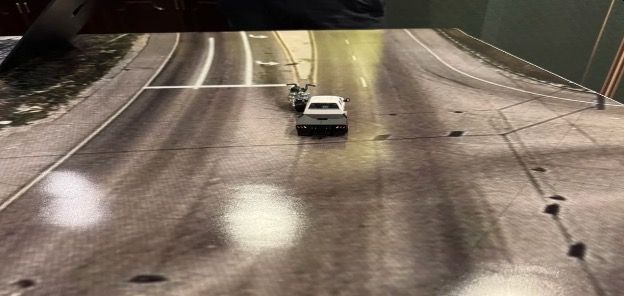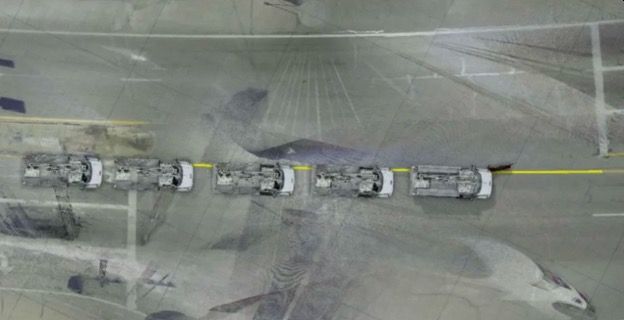- with Senior Company Executives, HR and Finance and Tax Executives
- with readers working within the Basic Industries, Media & Information and Transport industries
Cleveland, Ohio (October 15, 2025) - A Jefferson County jury returned an $82,105,345.70 verdict for a motorcyclist who had his left arm and left leg amputated after he was struck by a commercial truck. The plaintiff, 33-year-old Michael Shank, was awarded $79,105,345.70 and his wife was awarded $3 million for her loss of consortium claim.
The plaintiff motorcyclist was waiting to make a left turn at an intersection when he was struck by a commercial truck operated by Robert Gerner, an employee of Hilltop Energy (an explosives company), which is a sister company of D.W. Dickey (a cement company). Mr. Gerner, Hilltop Energy, and D.W. Dickey were all named defendants. Mr. Gerner worked for Hilltop Energy at the time of the crash, but also was responsible for maintaining Dickey's vehicles. He was driving a Chevrolet 5500 utility truck owned by Dickey at the time of the crash. The plaintiffs were represented by Michael Leizerman of the Law Firm for Truck Safety and Aaron DeShaw, a Portland, Oregon-based personal injury attorney.
The plaintiff was stopped in the northbound lane of State Route 7 in Jefferson County, Ohio, as he waited to turn left onto State Route 213. His motorcycle had passed the "Stop" line on the ground in the left turn lane of northbound SR 7 and was in the intersection, close to the unmarked centerline of the intersection, as he waited to turn left. At this time, Mr. Gerner approached the same intersection in the left southbound lane of SR 7. At the intersection, the left side of the defendants' truck struck the motorcycle, causing catastrophic injuries to the plaintiff.
Liability was disputed as the defendant driver told law enforcement that the motorcyclist turned left in front of his truck. The motorcyclist had no memory of the accident due to his severe traumatic brain injury. There were three witnesses to the accident. Two of the witnesses believed the truck was speeding through the 55 mph zone at an estimated speed of 60-65 mph. One witness stated she almost struck the motorcycle as she went through the intersection just prior to the defendants' truck, and that the motorcycle was dangerously close to the unmarked centerline separating northbound and southbound lanes. Another witness stated the truck swerved left of the centerline of the intersection, which resulted in the truck striking the motorcycle.
The plaintiffs' counsel used the images below from their accident reconstruction experts to show that the collision occurred with the truck slightly over the unmarked midline of the intersection.


During deposition, the defendant truck driver stated he had looked to his right to see if traffic was turning from SR 213 onto SR 7 as he approached the intersection. He admitted that what he told the police at the scene of the crash – that the motorcyclist turned left in front of him – was not accurate, as he did not remember seeing the motorcycle at the intersection immediately prior to the collision. Thus, he was unsure where the motorcycle was located when his truck impacted the motorcycle. Liability was still disputed, as the defendants believed the impact occurred on the truck's side of the intersection.
The collision resulted in catastrophic injuries to the plaintiff. He had three separate amputation surgeries to his left leg as doctors tried to save his leg above the knee, but ultimately had an above-the-knee amputation performed. He had multiple surgeries over an 18-month span to try to save his left arm, but it was ultimately amputated as well. The plaintiff also suffered a severe TBI as well as other significant injuries.
While liability was disputed, the defendants chose not to call their accident reconstruction expert at trial, as it is alleged that the plaintiff's accident reconstruction expert and law enforcement witnesses placed the point of impact on the plaintiff's side of the intersection, which was contrary to what the defendants' accident reconstruction report provided. The defendants' expert had used a gouge mark in the roadway as the point of impact, which differed from plaintiffs' expert and the law enforcement witnesses.
Plaintiffs' counsel also focused on "Reptile Theory" tactics and stressed that neither Hilltop nor Dickey provided commercial motor vehicle training to Mr. Gerner. The plaintiffs focused on the lack of driver training to Mr. Gerner, even though he had over three decades of experience driving commercial motor vehicles before he was hired by Hilltop. The plaintiffs also focused on the fact that neither company had a company safety policy for commercial motor vehicle drivers.
While the impact occurred very near to the unmarked centerline of the intersection, the defendants were deemed 100% at fault for this accident. With the severity of Mr. Shank's injuries, the jury awarded the $82 million verdict.
Takeaway
This verdict shows that trucking cases, even in relatively conservative jurisdictions, have the potential to go nuclear. It is extremely important to push back on Reptile tactics at every stage of litigation to ensure the jury is focused on the accident at hand and the applicable legal standard as opposed to the "safest way possible" to conduct operations and training that is not required by any federal regulation. Further, it is critical that every detail be examined carefully as the apparent failure of the defense expert to correctly identify the crash's impact point deprived the defense of a rebuttal accident reconstruction expert and likely resulted in a large miscalculation of the case's value.
The content of this article is intended to provide a general guide to the subject matter. Specialist advice should be sought about your specific circumstances.




